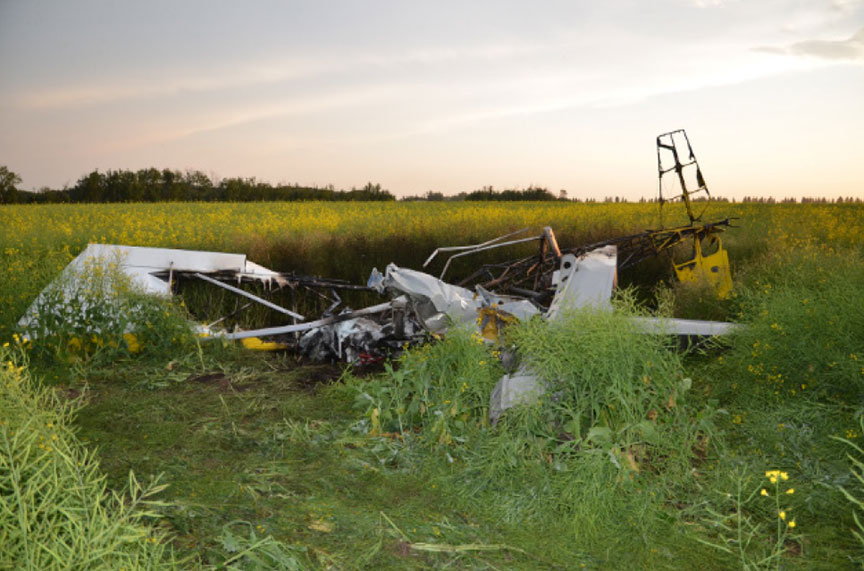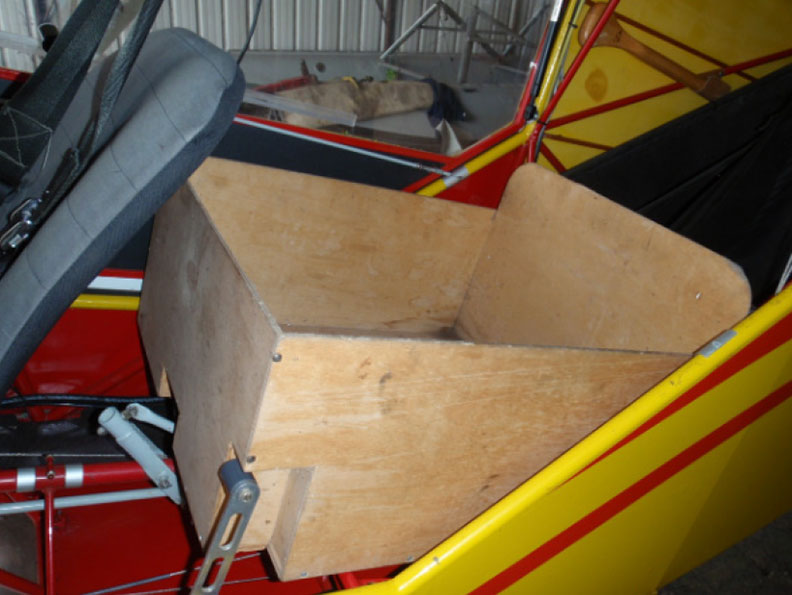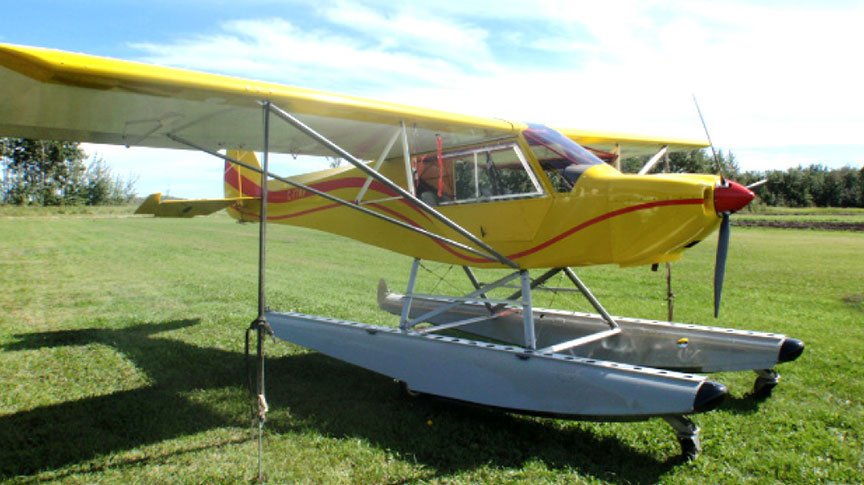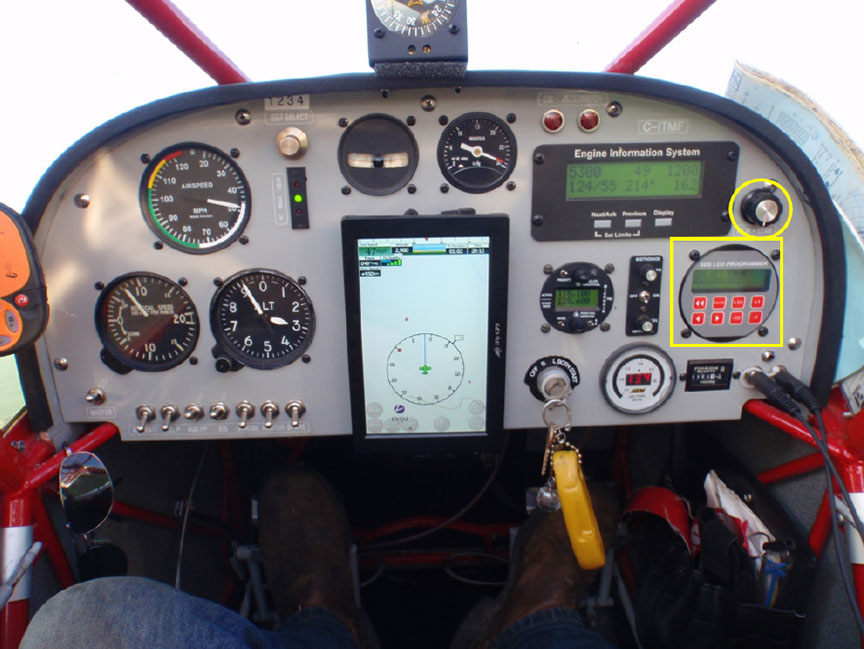Collison with terrain
Kasper Kootenay Wings MS Special (basic ultralight), C-ITMF
Grande Prairie, Alberta
The Transportation Safety Board of Canada (TSB) investigated this occurrence for the purpose of advancing transportation safety. It is not the function of the Board to assign fault or determine civil or criminal liability. This report is not created for use in the context of legal, disciplinary or other proceedings. See Ownership and use of content. Masculine pronouns and position titles may be used to signify all genders to comply with the Canadian Transportation Accident Investigation and Safety Board Act (S.C. 1989, c. 3).
History of the flight
At 1400Footnote 1 on 31 July 2018, the amphibious float-equipped Kasper Kootenay Wings MS Special basic ultralight aircraftFootnote 2 (registration C-ITMF, serial number 2001-1) departed a privately owned grass airfield located 7 nautical miles (nm) east of Grande Prairie, Alberta, bound for Saskatoon/John G. Diefenbaker International Airport (CYXE), Saskatchewan, with a planned fuel stop at St. Paul Airport (CEW3), Alberta. The pilot, alone on board, had purchased the aircraft and completed the transfer of ownership earlier that day. No flight plan had been filed with NAV CANADA.
When the aircraft was approximately 1 nm from the airfield, on the runway heading, it was seen at an altitude of 300 to 500 feet above ground level (AGL). The engine rpm was heard slowly increasing and decreasing but was not running rough. Moments later, the left wing dropped, and the aircraft entered a steep nose-down attitude. During the descent, the engine rpm increased rapidly, and the rpm remained high until the aircraft struck the ground (Figure 1).
The pilot was fatally injured and the aircraft was destroyed in an intense post-impact fire. The aircraft was not equipped with an emergency locator transmitter nor was one required by regulation; however, a portable SPOT Satellite GPS [global positioning system] Messenger was on board.
Background
On 30 July 2018, the occurrence pilot (the pilot) took a commercial flight from CYXE to Grande Prairie Airport (CYQU), Alberta, to complete the purchase of the occurrence aircraft. Upon arrival, the pilot met with the person selling the aircraft (the owner) and together they travelled to a privately owned grass airfield, 7 nm east of Grande Prairie.
At approximately 1745, the owner took the pilot for a local familiarization flight in the aircraft. The owner was the pilot-in-command and was seated in the front seat of the aircraft. The pilot was seated in the rear seat of the aircraft. The aircraft was equipped with dual control sticks, rudder pedals, and throttle control. The flight and engine instruments were located in the forward cockpit only. During the flight, the pilot had the opportunity to control the aircraft from the rear seat. Roughly 45 minutes later, the aircraft landed without issues at the private airfield. The landing was conducted by the owner of the aircraft.
On the morning of 31 July 2018, the owner and the pilot removed the conventional tail wheel landing gear and installed amphibious floats. Following the aircraft configuration change, the owner and the pilot conducted another local familiarization flight, departing at 1000. The flight consisted of several circuits and water landings at Clairmont Lake, Alberta. The aircraft returned to the airfield at 1100.
During the next 3 hours, the aircraft ownership was transferred and the aircraft was prepared for the return flight to CYXE. The aircraft'sthree tanks (two 9-U.S. gallon main fuel tanks—one in each wing—and one 8-U.S. gallon header fuel tank, located in the fuselage aft of the cockpit) were filled to capacity. An additional 5-U.S. gallon can of fuel was secured in the rear seat area of the cockpit. This extra fuel was intended to be used to refuel the aircraft during the planned fuel stop at CEW3.
During preparations for the return flight, the rear seat of the aircraft was removed and a wooden storage box, which had been used many times by the previous owner, was installed (Figure 2). The box was secured to the aircraft floor structure at 4 attachment points matching those of the removed seat. All of the aircraft's historical records were placed in a backpack and secured in the box, along with the pilot's personal travel items.
The investigation was unable to determine how much flight planning and how many pre-flight checks of the aircraft had been done prior to departure.
Transfer of aircraft ownership
The requirements for the transfer of ownership of aircraft outlined in the Canadian Aviation Regulations are limited to aircraft registration documentation. No additional training or maintenance is required before a basic ultralight aircraft is sold or after it is purchased. Flight preparations in a new basic ultralight aircraft are the sole responsibility of the pilot who will be conducting the flight.
The Transport Canada Ultra-light Aeroplane Transition Strategy states [emphasis in original]:
Prospective purchasers of Basic Ultra-light Aeroplane kits should be aware that kit manufacturers and part suppliers are bound by no legal requirements under the Aeronautics Act. It is strongly recommended that owners and prospective owners of Basic Ultra-light Aeroplanes avail themselves of the information and services provided by the recreational aviation industry, schools and the ultra-light aviation community.Footnote 3
Because the Kasper Kootenay Wings MS Special aircraft was built from plans, it is unknown how general system descriptions, aircraft limitations, normal procedures, emergency procedures, and safety information were disseminated or made available to the pilot.
The investigation was unable to determine to what extent the occurrence pilot had studied, trained, or prepared to fly the aircraft, and how much knowledge and understanding he had of the various aircraft systems, including engine and avionics.
Weather information
The CYQU hourly weather observation taken at 1400 reported light winds (at 8 knots); visibility 25 statute miles with scattered clouds at 9000 feet AGL; broken clouds at 22 000 feet AGL; and temperature 23 °C. Density altitude was 3500 feet above sea level. Weather was not considered a factor in this accident.
Pilot information
The pilot held a valid ultralight pilot permit, which had been issued on 17 April 2018, and a Category 4 medical certificate, which was valid until February 2022.
According to the pilot's logbook, the pilot began his ultralight pilot permit training on 20 July 2016 and had accumulated 58.2 hours of flight time when the ultralight pilot permitFootnote 4 was issued. This flight time included 16.5 hours of dual instruction and 41.7 hours solo. The pilot had logged 3.3 hours since the permit was issued. All flight time was conducted on a Husky Norseman II basic ultralight aircraft, which the pilot owned. The Husky Norseman II was equipped with a 65 hp, 2-cylinder, 2-stroke Rotax 582 engine, which is less advanced than the Rotax 912ULS engine installed on the occurrence aircraft; the occurrence aircraft was also fitted with the Simple Digital System (SDS) electronic fuel injection system.
Prior to the occurrence flight, the pilot flew with the previous owner in C-ITMF on several familiarization and demonstration flights, totalling approximately 2 hours. During this time, the occurrence pilot was able to fly the aircraft from the rear seat, but he was not able to see or manipulate the aircraft instruments and engine instruments. During this time, the occurrence pilot was not flying as pilot-in-command. The only time the occurrence pilot flew solo or as pilot-in-command on the occurrence aircraft was during the occurrence flight.
Aircraft information
The Kasper Kootenay Wings MS Special is a high-wing, 2-seat aircraft of steel tubing and fabric (Figure 3). The occurrence aircraft was built from plans and raw materials in 2001. All of the aircraft's records were destroyed in the post-impact fire.
According to the Transport Canada application for registration of this aircraft, the maximum take-off weight was 1200 pounds, the empty weight was 721 pounds, and the stall speed was 35 mph.
The aircraft was equipped with a Bombardier Recreational Products (BRP) Rotax 912ULS engine (serial number 5651664), which is a 4-cylinder, 4-stroke liquid/air-cooled engine that produces 100 hp at a maximum rpm of 5800.
The aircraft had no known deficiencies before the occurrence flight. Continuity of the engine controls was verified. An examination of the engine at the TSB facility in Edmonton, Alberta, was completed with the engine manufacturer present. There were no indications that the engine was not capable of producing power. The investigation determined that there was flight-control continuity before the accident.
Electronic fuel injection system
When the aircraft was constructed in 2001, it was equipped with a 75 hp Suzuki automotive engine that was converted for aircraft use. In 2002, an EM-4-FFootnote 5 model electronic fuel injection (EFI) system, manufactured by SDS, was installed on the Suzuki engine.
The SDS EFI is an engine management system that offers reduced fuel flow, no carburetor icing, and electronic fuel system control and adjustment. According to the manufacturer,
[t]he F system is an integrated fuel injection and ignition system. Engine spark timing is fully programmable for both RPM and load (manifold pressure or throttle position). Programming is done with the SDS hand-held programmer. Triggering is accomplished with magnets attached to the crankshaft pulley and a Hall effect sensor fitted to the timing cover.Footnote 6
In 2013, the Suzuki engine was replaced with a Rotax 912 ULS engine and the EFI system was transferred to the new engine. The electronic control unit and dual electric fuel pumps remained from the original engine. Modifications on the Rotax engine included a new magnet disc and Hall effect sensor mounted on the rear of the engine, as well as billet injector mounts welded to the intake manifold to accept the fuel injector units.
Mixture control
The SDS EFI system has a mixture control knob, which is located on the aircraft's instrument panel (Figure 4).
Mixture control allows the fuel injection system to be pre-programmed and also to be manually adjusted within a range of 50% more or less than the pre-programmed setting, giving the pilot independent control in the event of certain sensor failures. There can, however, be a loss of engine power at the leanest and richest settings of the adjustment range. Some pilots prefer to manually make the fuel mixture leaner using the knob once cruise power is set. The investigation was unable to determine whether the mixture control was manipulated during the flight, and, due to the intense post-impact fire, the final mixture setting could not be determined.
Safety message
Basic ultralight aircraft are operated with little regulation and regulatory oversight; therefore, pilots are responsible for ensuring that they are knowledgeable about aircraft systems, particularly when operating an unfamiliar aircraft.
This concludes the TSB's limited-scope investigation into this occurrence. The Board authorized the release of this investigation report on . It was officially released on .



